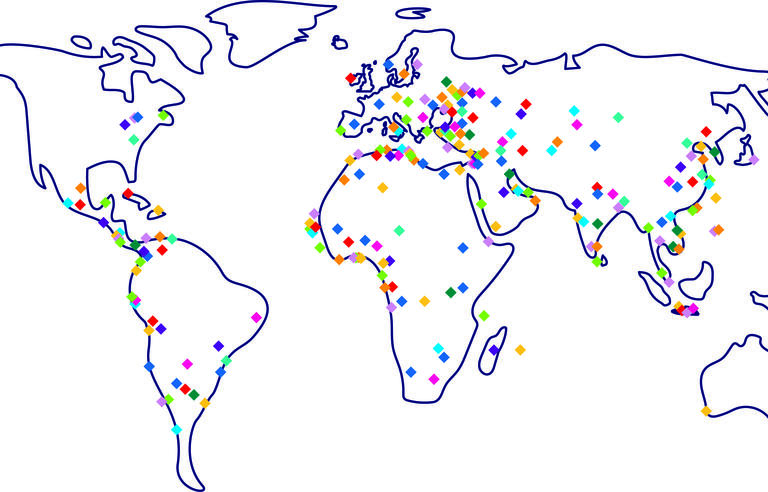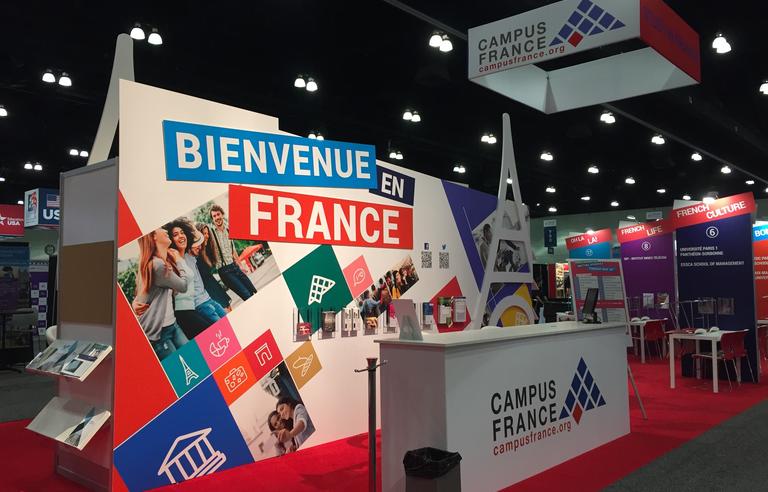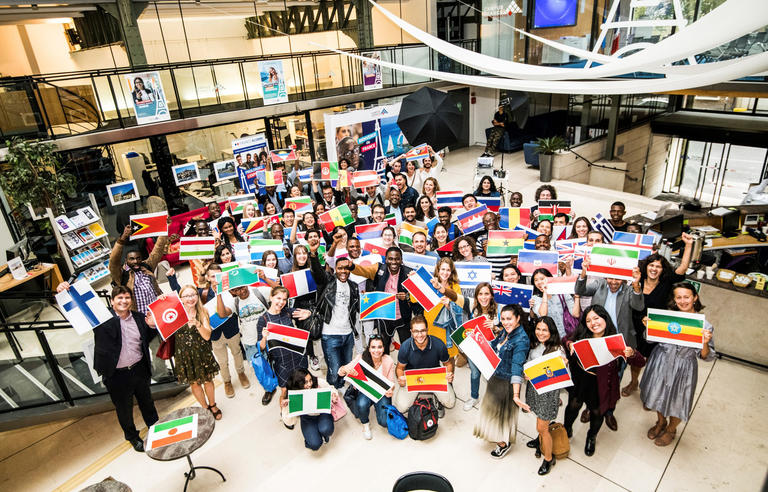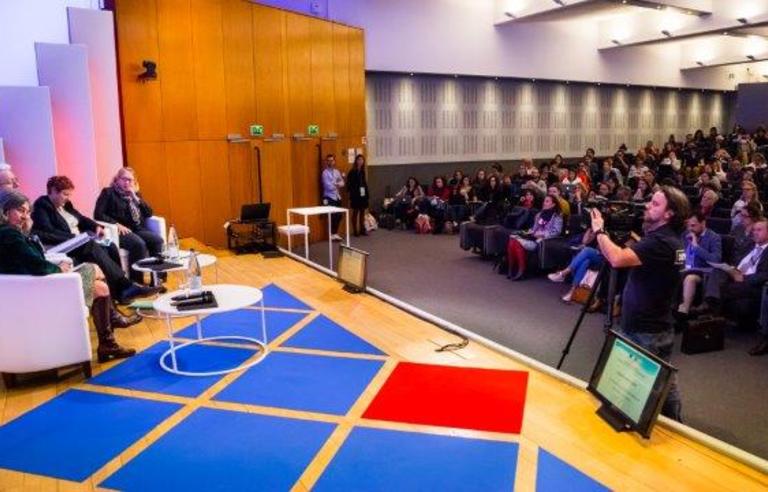
France: The world’s top destination for sub-Saharan African students
France remains the top destination for students from sub-Saharan Africa. 14% of students from the region study in France, ahead of the United States (10%) and South Africa (7%). This is true even despite the increasingly lively competition between old and new host countries. A new study by Campus France, “The major trends in sub-Saharan African student mobility”, deciphers the latest developments in this key region which has 430,000 students (7% of the world total).

Les chiffres-clés

Une population étudiante très mobile
Les étudiants originaires d’Afrique subsaharienne sont particulièrement mobiles : 4,8% d’entre eux partent en mobilité internationale, contre 2,7% en moyenne dans le monde. Les étudiants subsahariens mobiles représentent près de 7% du total des étudiants en mobilité diplômante alors qu’ils ne constituent que 3,7% du nombre total des étudiants dans le monde. A l’heure actuelle, seulement 9% de la population en âge de le faire suit des études supérieures, et les prévisions démographiques estiment que l’ensemble de la population devrait doubler d’ici 2050 : les enjeux de formation prennent donc une ampleur majeure.

Quels sont les principaux pays d’origine de la mobilité ?
Les étudiants du Nigeria forment le premier contingent d’étudiants d’Afrique subsaharienne en mobilité diplômante, avec 71 700 étudiants mobiles en 2020, soit 17% du total des étudiants subsahariens mobiles. Ce chiffre est cependant en baisse de 24% depuis 2015, contrairement à la tendance générale. Les étudiants nigérians choisissent très majoritairement des pays anglophones (États-Unis, Royaume-Uni, Canada).
En deuxième et troisième position, les étudiants mobiles provenant du Cameroun (27 000) et du Zimbabwe (19 100) représentent 6% et 4% du total des étudiants subsahariens. Les Camerounais se rendent majoritairement en Allemagne et en France, tandis que les Zimbabwéens partent largement vers l’Afrique du Sud. Chacun de ces contingents est en légère augmentation sur cinq ans : +13% pour les Camerounais, et +13% pour les Zimbabwéens, en deçà de la moyenne de +21%.
Le nombre d’étudiants mobiles provenant du Ghana, dont le nombre d’étudiants global a fortement augmenté depuis 2011, et de la Côte d’Ivoire est en très forte progression : respectivement +62% et +87% en cinq ans. Ces deux pays atteignent ainsi la quatrième et cinquième place. Les Ghanéens vont étudier principalement aux États-Unis, tandis que les Ivoiriens privilégient la France.

La France, première destination des étudiants subsahariens dans le monde
En 2021-2022, la France accueillait près de 92 000 étudiants subsahariens, ce qui représente 14% des étudiants mobiles de la région et 23% du nombre d’étudiants de nationalité étrangère sur le territoire français. Le pays est particulièrement attractif auprès des étudiants francophones : les 20 premiers pays d’origine des étudiants subsahariens en France sont des pays où le français est langue d’enseignement. Les Sénégalais demeurent les étudiants subsahariens les plus nombreux en France, devant les Ivoiriens et les Camerounais. La croissance du nombre d’étudiants subsahariens en France (+40% entre 2016 et 2021) est deux fois plus rapide que depuis les autres zones (+21% en moyenne). Ces 92 000 étudiants subsahariens sont majoritairement des hommes (56 %), étudient à l’université (70 %), y choisissent largement les disciplines scientifiques (32 %) et s’inscrivent avant tout au niveau licence (56 %).


L’attractivité des autres pays d’accueil
En 2020, les États-Unis sont devenus la deuxième destination de prédilection, dépassant l’Afrique du Sud et le Royaume-Uni grâce à une progression de +20% en cinq ans. Avec 41 700 étudiants subsahariens, ils accueillent 10% du total des 430 000 étudiants en mobilité diplômante.
L’Afrique du Sud et le Royaume-Uni, bien que 3e et 4e pays d’accueil avec respectivement 30 300 et 27 800 étudiants subsahariens, ont moins d’étudiants par rapport à 2015 : respectivement en baisse de 14 et 9%. Au Royaume-Uni, cela s’explique principalement par la baisse du nombre d’étudiants nigérians (-27%). En Afrique du Sud cela est dû à des arrivées moins nombreuses d’étudiants des pays d’Afrique australe.
En ce qui concerne la mobilité intra-zone, elle est particulièrement faible : seuls 20% des étudiants subsahariens mobiles choisissent de rester dans la région. Cela a encouragé les politiques de développement de campus co-construits, afin de diversifier l’offre de formation et d’offrir des diplômes de référence dans plusieurs pays. Aujourd’hui, il existe plus de 400 doubles diplômes reliant des établissements français et africains, avec l’objectif de doubler encore ce nombre, et quatre campus conjoints depuis 2018 : le hub franco-ivoirien (octobre 2018), le campus franco-sénégalais (juin 2019) et l’Université française d’Egypte (2019).
Les nouveaux acteurs
La demande accrue des étudiants subsahariens mobiles a provoqué l’émergence de nouvelles destinations : le Canada, le Maroc, la Turquie, l’Allemagne et le Portugal. Le Canada et le Maroc voient leur nombre d’étudiants subsahariens fortement augmenter : respectivement +67% et +61% en cinq ans.
La Turquie a presque triplé le nombre d’étudiants subsahariens accueillis et connaît la plus forte progression : +183% en cinq ans. Elle devient ainsi la 7e destination, en atteignant 19 700 étudiants mobiles en 2020. L’Allemagne et le Portugal, avec respectivement 18 900 et 14 900 étudiants subsahariens accueillis, sont les 2e et 3e pays de l’Union Européenne.
Recommended News




















































